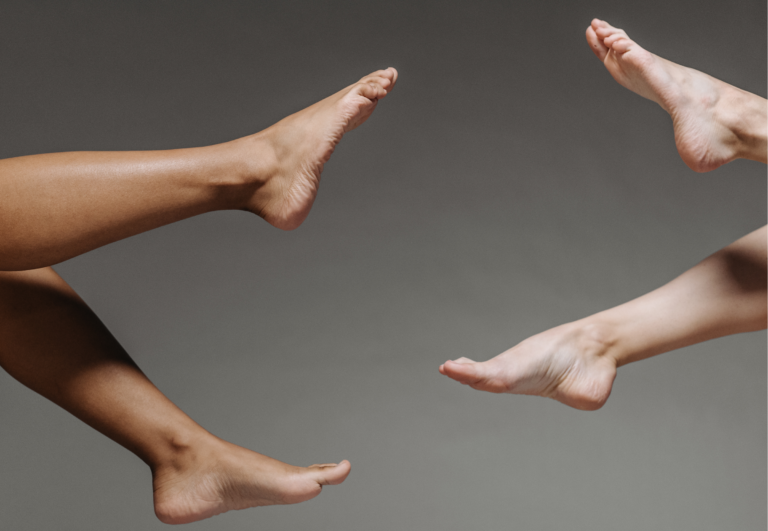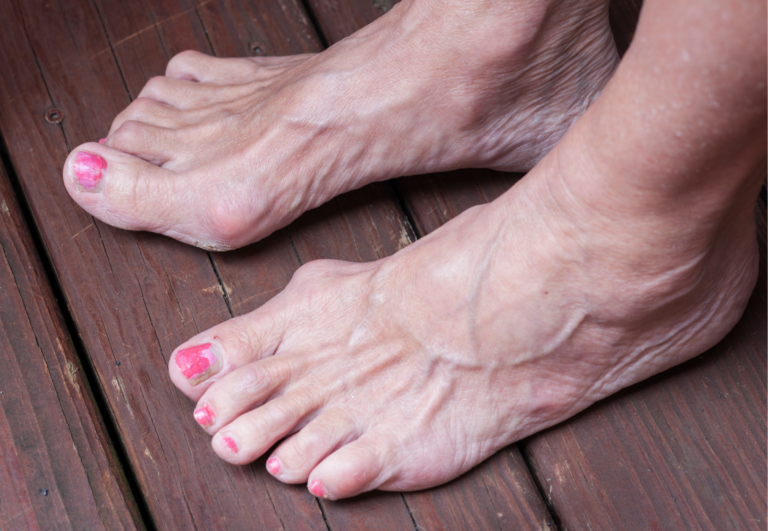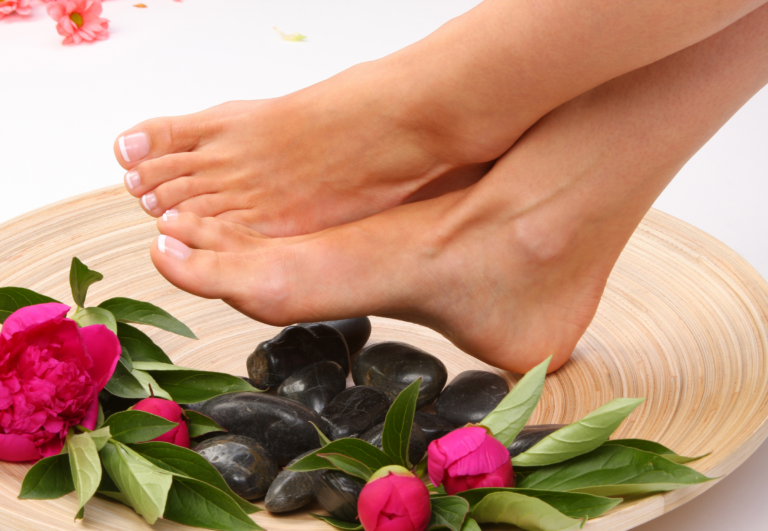Using Toe Spacers with Plantar Fasciitis Night Splints: Enhancing Comfort and Healing
Plantar fasciitis is a common foot condition where the plantar fascia, the thick band of tissue that connects the heel bone to the toes, becomes inflamed, often leading to a stabbing pain near the heel. As someone who’s keenly interested in foot health and the use of toe spacers, I’ve learned that managing this discomfort is crucial for maintaining an active lifestyle. Night splints are one supportive measure frequently recommended to alleviate symptoms by stretching the plantar fascia overnight.
With the experience of using toe spacers, which are designed to realign toes and reduce stress on the foot, I’ve found that they can complement the function of night splints. By promoting proper toe alignment, toe spacers may contribute to a more balanced distribution of weight across the foot. This may potentially aid in the relief of plantar fasciitis symptoms, when used in conjunction with other treatments.
Incorporating toe spacers into your nightly routine simultaneously with night splints could offer an enhanced approach to managing plantar fasciitis symptoms. These tools, while simple, can possibly promote healing by keeping the foot appropriately positioned and the plantar fascia gently stretched, which can be an aid in reducing the discomfort experienced first thing in the morning.
How To Use Toe Spacers with Plantar Fasciitis Night Splints
Using toe spacers in conjunction with plantar fasciitis night splints can be beneficial for individuals suffering from plantar fasciitis, a common condition characterized by heel pain due to inflammation of the plantar fascia.
Here’s how they can complement each other in a treatment plan:
1. Enhanced Stretching
Plantar fasciitis night splints are designed to keep the foot in a dorsiflexed position, stretching the plantar fascia and Achilles tendon overnight. Toe spacers can further promote this stretching by positioning the toes in a way that enhances the natural alignment of the foot and may help reduce tension in the plantar fascia.
2. Improved Circulation
While the night splint maintains the stretch, toe spacers can help improve circulation in the toes and throughout the foot. Better blood flow can aid in reducing inflammation and promoting healing.
3. Alleviating Toe Discomfort
Night splints can sometimes cause the toes to feel cramped or pressured. Toe spacers can mitigate this by preventing the toes from overlapping or pressing against each other, thus providing additional comfort during sleep.
4. Supporting Overall Foot Health
Consistent use of toe spacers can strengthen the muscles in the foot and improve foot mechanics. When combined with the benefits of a night splint, this can contribute to a more comprehensive approach to treating plantar fasciitis.
It’s important to note that while toe spacers and night splints can provide relief, they should be used as part of a broader treatment strategy for plantar fasciitis, which may include physical therapy, stretching exercises, proper footwear, and possibly anti-inflammatory medications. Always consult with a healthcare professional before starting any new treatment to ensure it’s appropriate for your specific condition.
What Is Plantar Fasciitis?

Plantar fasciitis is a common foot condition characterized by sharp heel pain that is often most intense after rest. It involves inflammation of the plantar fascia, a thick band of tissue connecting your heel to the front of your foot.
Identifying Symptoms
- Heel Pain: A stabbing pain in the bottom of the heel that usually occurs with the first steps in the morning.
- Arch Pain: Aches in the arch of the foot can also be present, as the plantar fascia is a critical ligament supporting the foot arches.
- Pain Development: The discomfort may lessen after taking a few steps but might return after long periods of standing or when standing up after sitting.
Recognizing Causes
The exact cause of plantar fasciitis can vary, but typically it is linked to:
- Faulty Foot Structure: People with flat feet, high arches, or even normal arches can develop plantar fasciitis due to inherent structural foot issues.
- Stress and Strain: Excessive pressure over time can damage or tear the plantar fascia, leading to inflammation and pain.
- Age and Activity: It’s more common in men and women between the ages of 40 and 60 and among those who are often on their feet.
Understanding plantar fasciitis’s symptoms and causes is crucial for seeking the right interventions, such as the use of toe spacers or night splints which can alleviate some of the discomfort by helping to maintain proper foot alignment and relieve strain on the plantar fascia.
Exploring Treatment Options
When addressing plantar fasciitis, combining toe spacers with night splints can be an effective strategy for pain relief and correcting foot posture.
Professional and At-Home Care
I’ve learned that consulting with a podiatrist is the first step. They might recommend treatments that range from orthotics to physical therapy. Engaging in professional care is often essential to ensure proper diagnosis and management of this foot pain. At home, toe spacers can be used to help alleviate discomfort by promoting proper toe alignment and improving recovery from injury. Night splints, on the other hand, are designed for overnight use, keeping the foot in a dorsiflexed position to gently stretch the plantar fascia.
- Professional Care:
- Podiatrist Consultation
- Custom Orthotics
- Guided Physical Therapy
- At-Home Care:
- Toe Spacers
- Plantar Fasciitis Night Splints
Importance of Choosing Right Treatment
Choosing the right treatment option is crucial. Night splints work best for keeping the plantar fascia stretched overnight, which can lead to less pain in the morning. Toe spacers serve a complementary role by helping to maintain proper toe spacing, limiting excess strain on the plantar fascia. Together, these tools can help manage pain relief and potentially expedite the recovery process from the discomfort of plantar fasciitis.
- Consideration Factors:
- Foot Anatomy
- Severity of Pain
- Individual Tolerance to Treatments
By carefully selecting a combination of professional and at-home care, including the use of orthotics, splints, and toe spacers, I’ve seen people create an effective treatment regime that addresses the root causes of plantar fasciitis while providing symptomatic relief.
Design and Function of Night Splints
In my experience with plantar fasciitis, I’ve found that the design and function of night splints are crucial for alleviating heel pain and improving foot health. They offer essential support and stretch to the foot and ankle while you sleep.
Benefits of Night Splints
Night splints serve to maintain the ankle in dorsiflexion, which provides a consistent, gentle stretch to the plantar fascia. This prevents the fascia from tightening overnight, often the cause of sharp heel pain in the morning. Additionally, by keeping the foot and Achilles tendon in a stretched position, night splints can help reduce symptoms of foot drop by supporting the foot in a neutral position.
- Key Benefits:
- Alleviate morning heel pain
- Help prevent foot drop
- Improve ankle and foot flexibility
Types of Night Splints
There are two primary types of night splints: dorsal and boot splint. Each type comes with its own set of features designed to meet specific needs.
Dorsal Night Splints:
- Feature a hard plastic support that runs along the shin and top of the foot
- Hold the foot at a 90-degree angle
- Usually include velcro straps and built-in cushioning for a snug fit
Boot Splints:
- Encase the back of the leg and the bottom of the foot
- Typically more bulky but may offer more immobilization
- Often have adjustable straps and may include additional padding for extra comfort
By selecting the right type of night splint and ensuring a proper fit, individuals can maximize the efficacy of the splint and support their journey toward pain relief and recovery from plantar fasciitis.
The Role of Toe Spacers in Recovery

When dealing with plantar fasciitis, integrating toe spacers into recovery routines can provide meaningful relief. Their use can alleviate discomfort and aid in the rehabilitation process by addressing common foot alignment issues.
Advantages of Using Toe Spacers
- Improved Comfort: Toe spacers can significantly reduce pain caused by bunions, hammertoe, and crowded toes. By gently separating the toes, spacers can enhance circulation and reduce pressure on the plantar fascia.
- Alignment Support: Regular use of toe spacers promotes a more natural toe alignment, potentially aiding the recovery process when combined with plantar fasciitis night splints. This can lead to better foot function and may prevent further toe deformities.
Materials & Flexibility:
- Silicone is often preferred for toe spacers due to its hypoallergenic properties and flexibility, providing a comfortable fit and adapting well to various toe shapes.
Conditions Addressed:
- Bunions
- Hammertoe
- Toe misalignment
Selecting Appropriate Toe Spacers
- Fit & Size: Selecting the right size is crucial for effectiveness and comfort. Spacers should fit snugly between toes without causing excessive pressure.
- Material Quality: High-quality silicone spacers are durable and can be cleaned easily, making them a practical option for prolonged use.
Comfort Considerations for Toe Spacers:
| Condition | Material Recommended | Notes |
|---|---|---|
| Bunions | Soft Silicone | Reduces pressure on the joint |
| Hammertoe | Flexible Silicone | Allows for easy adjustment with movement |
| Toe Crowding | Firm Silicone | Ensures proper spacing and alignment |
In summary, toe spacers are a valuable tool for supporting the feet during the recovery from plantar fasciitis, especially when seeking pain relief and improved alignment. Proper selection and usage can enhance the benefits of night splints, offering a more comprehensive approach to recovery.
Integrating Toe Spacers with Night Splints
When dealing with plantar fasciitis, combining toe spacers with night splints may provide additional benefits by addressing multiple aspects of foot health simultaneously. Toe spacers work by realigning the toes to their natural position, reducing pressure on the plantar fascia tissue, while night splints keep the ankle and Achilles tendon gently stretched to alleviate discomfort.
Toe Spacers:
- Function: Encourage correct toe alignment; alleviate stress on ligaments
- Usage Time: Varied; follow product-specific instructions
Night Splints:
- Function: Maintain a gentle stretch in the Achilles tendon and plantar fascia
- Usage Time: Typically overnight or as per product-specific instructions
To ensure both toe spacers and night splints work effectively, they should be integrated as follows:
- Fit Your Toe Spacers: Before you go to bed, place the toe spacers between your toes. They should feel comfortable, with no excessive pressure.
- Attach Night Splint: Once the toe spacers are in position, secure the night splint to your foot. The splint should support the natural arc of your foot without impeding circulation or causing discomfort.
- Monitor Movements: While movement is limited with a night splint, ensure there’s no added stress on your ankle or ligaments due to incorrect application of either product.
- Rest Well: Allow your body to rest, as adequate sleep is crucial for recovery.
By following these steps, you may enhance overall treatment effectiveness. Remember to consult with a healthcare professional before starting any new treatment options.
Lifestyle and Preventive Measures
In managing plantar fasciitis, the right lifestyle habits and preventive measures can make a significant difference. Daily exercises and proper footwear are key to improving foot health.
Daily Exercises and Stretching
I find that incorporating daily exercises and stretching routines specifically targeting the feet can enhance flexibility and promote blood flow, which is crucial for both men and women dealing with plantar fasciitis. Stretching the plantar fascia, Achilles tendon, and calf muscles first thing in the morning can help reduce the notorious morning pain associated with this condition.
- Toe stretches: Curl and uncurl your toes for a few minutes.
- Calf stretches: Stand facing a wall with one foot back, and press the heel down while leaning forward until you feel a stretch in your calf.
- Plantar fascia stretch: Sit down and pull your toes back towards your shins, stretching the arch of your foot.
Footwear Considerations
I’ve noticed that people often underestimate the impact of footwear on plantar fasciitis. As a toe spacer expert and not a medical professional, I advise choosing shoes that offer proper arch support and a cushioned sole to alleviate pressure on the heel. Here are a few specific points to consider:
- Supportive shoes: Ensure shoes have a firm heel counter and adequate arch support.
- Avoid flat and hard surfaces: Wear shoes even at home if necessary to provide continuous support.
Remember, prevention is an ongoing process. Combining consistent stretching routines with mindful footwear choices contributes significantly to the overall health of your feet and can help reduce the symptoms of plantar fasciitis.





